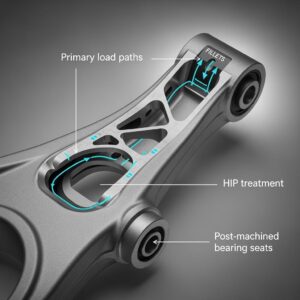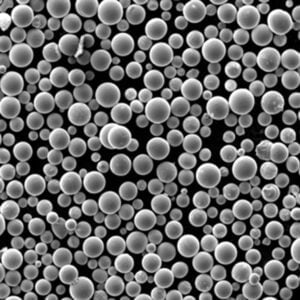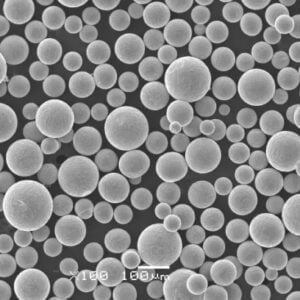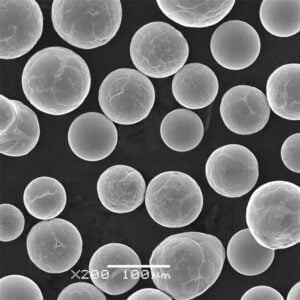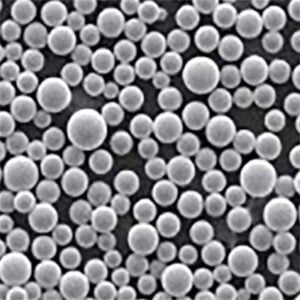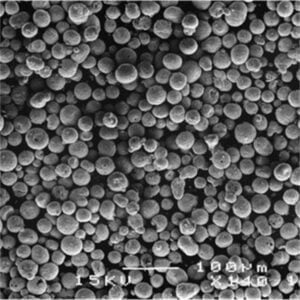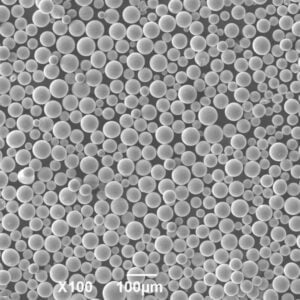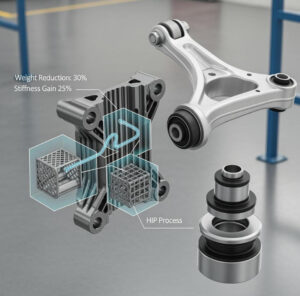LPBFのプロセスを理解する
目次
概要
レーザー粉末床融合法(LPBF)は、高出力レーザーを使用して金属粉末を精密で高性能な部品に融合させる画期的な積層造形技術です。航空宇宙から医療機器に至るまで、複雑な設計と材料特性が最重要視される産業において、画期的な技術である。しかし LPBFプロセス?LPBFが伝統的な製造方法とどのように比較されるかを見てみよう。
LPBFの紹介
レーザー粉末床融合法(LPBF)は、粉末材料を層ごとに融合させることによって物体を作成することに重点を置いた積層造形法(AM)のサブセットである。このプロセスは、3Dモデルに基づいて金属粉末を選択的に溶融する高強度レーザーを活用し、卓越した精度と材料特性で複雑な形状を作成します。
LPBFの仕組み
LPBFは、まず金属粉末の薄い層を造形プラットフォームに敷き詰める。コンピュータ支援設計(CAD)データによって誘導されたレーザービームが、粉末を選択的に融合して固形層にする。その後、プラットフォームが下がり、さらに粉末の層が広げられる。この工程は、部品全体が形成されるまで繰り返される。余分な粉末の除去や熱処理などの後処理工程を経て、製品が完成する。
LPBFの主なステップ:
- パウダー・スプレッディング: リコーターは、金属粉末の薄い層を造形プラットフォームに広げる。
- レーザー溶融: レーザーはCADモデルに従って粉末を選択的に溶融・融合させる。
- レイヤービル: 台が下がり、次の粉の層が塗られ、溶ける。
- 後処理: 余分なパウダーは除去され、必要に応じてさらなる処理が施される。
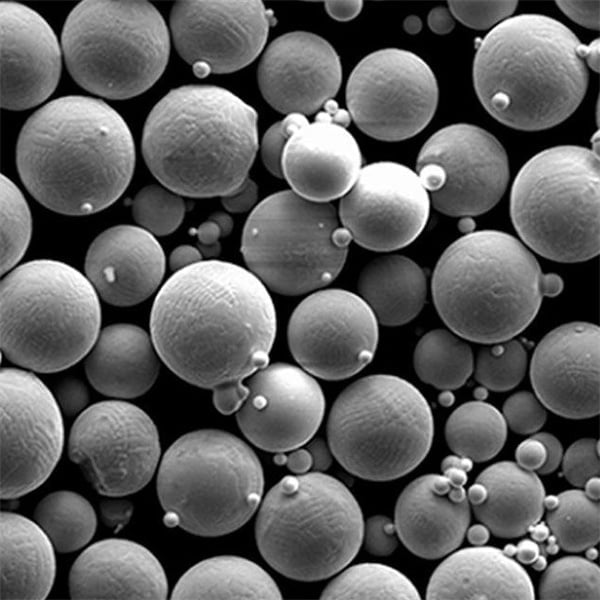
金属粉末の種類 LPBF
用途によって必要な材料は異なります。以下は、LPBFで一般的に使用される金属粉末の一部です:
一般的な金属粉末:
| 金属粉末 | 構成 | プロパティ |
|---|---|---|
| ステンレス鋼 | Fe、Cr、Ni | 高い耐食性、強度、延性 |
| チタン合金 | Ti-6Al-4V | 高い強度対重量比、生体適合性 |
| アルミニウム合金 | AlSi10Mg | 軽量、優れた熱伝導性と電気伝導性 |
| インコネル718 | Ni、Cr、Fe、Nb | 耐高温性、耐食性 |
| コバルトクロム | Co、Cr、Mo | 耐摩耗性、強度、生体適合性 |
| マレージング鋼 | Fe、Ni、Mo、Co | 高強度、靭性、良好な切削性 |
| 銅合金 | 銅(他の元素をわずかに含む | 優れた熱伝導性と電気伝導性、優れた機械的特性 |
| 工具鋼 | Fe、C、Cr、V | 高硬度、耐摩耗性、良好な加工性 |
| ハステロイX | Ni、Cr、Fe、Mo | 高強度、耐酸化性、良好な成形性 |
| ニッケル合金 | Ni、Cr、Mo | 耐食性、高温性能 |
LPBFの応用
LPBFは汎用性があり、複雑な形状や特注部品を製造する能力があるため、多くの産業で応用されている。
産業への応用:
| 産業 | 応用例 |
|---|---|
| 航空宇宙 | タービンブレード、燃料ノズル、構造部品 |
| メディカル | インプラント、補綴物、手術器具 |
| 自動車 | エンジン部品、トランスミッション部品、カスタム工具 |
| エネルギー | 熱交換器、タービン部品、配管部品 |
| ジュエリー | カスタムデザイン、複雑な作品、プロトタイプ |
| 工具 | 金型、金型、カスタム金型 |
LPBFの利点
なぜLPBFが注目されているのでしょうか?その主な利点を探ってみよう。
主な利点
- 複雑な幾何学: LPBFは、従来の方法では困難または不可能な、複雑で入り組んだデザインの作成を可能にします。
- 材料効率: 必要な量のパウダーだけを使用するため、廃棄物が最小限に抑えられる。
- カスタマイズ: 特定のニーズに合わせたカスタム部品やワンオフ部品を簡単に製造できます。
- 強さとパフォーマンス: 高い材料密度と優れた機械的特性。
- リードタイムの短縮: 従来の製造に比べ、生産時間を短縮。
のデメリット LPBF
どんな技術にも言えることだが、LPBFには欠点がある。それらを利点と天秤にかけることが重要だ。
主な欠点
- 高いコスト: 設備や材料のコストが高く、低予算のプロジェクトには向かない。
- ビルドサイズの制限: マシンのビルドボリュームに制限される。
- 後処理の要件: 多くの場合、大幅な後処理が必要となり、時間とコストがかかる。
- パウダーハンドリング: 金属粉は危険な場合があり、慎重な取り扱いと保管が必要である。
- 表面仕上げ: 所望の表面品質を達成するために、追加の仕上げ工程が必要になる場合がある。
金属粉末の技術仕様
LPBFでの性能に重要な金属粉末の仕様は様々である。
技術仕様:
| 金属粉末 | 粒子径 | 密度 (g/cm³) | 融点 (°C) | 引張強さ (MPa) | エロンゲーション(%) |
|---|---|---|---|---|---|
| ステンレス鋼 | 15-45 µm | 7.9 | 1450 | 600 | 40 |
| チタン合金 | 20-45 µm | 4.43 | 1660 | 900 | 10 |
| アルミニウム合金 | 20-63 µm | 2.7 | 660 | 400 | 10 |
| インコネル718 | 15-53 µm | 8.19 | 1300 | 1250 | 20 |
| コバルトクロム | 15-45 µm | 8.4 | 1330 | 1100 | 15 |
| マレージング鋼 | 10-45 µm | 8.0 | 1413 | 2000 | 12 |
| 銅合金 | 15-45 µm | 8.96 | 1083 | 210 | 40 |
| 工具鋼 | 10-45 µm | 7.8 | 1420 | 2000 | 5 |
| ハステロイX | 15-53 µm | 8.22 | 1330 | 780 | 40 |
| ニッケル合金 | 15-45 µm | 8.44 | 1440 | 690 | 25 |
サプライヤーと価格
これらの金属粉はどこで手に入り、いくらで買えるのか?その内訳は以下の通りである。
サプライヤーと価格設定:
| サプライヤー | 提供する金属粉末 | 価格帯(kgあたり) |
|---|---|---|
| EOS GmbH | ステンレススチール、チタン、アルミニウム | $300 – $600 |
| GEアディティブ | インコネル、コバルトクロム、マルエージング鋼 | $500 – $1000 |
| 3Dシステムズ | 銅合金、工具鋼、ハステロイ | $400 – $900 |
| カーペンター・テクノロジー | ニッケル合金、ステンレス鋼 | $350 – $800 |
| サンドビック | チタン合金、アルミニウム | $300 – $700 |
| AP&C(GEアディティブ) | 各種金属粉 | $400 – $950 |
長所と短所の比較
LPBFは他の製造工程と比べてどうなのか?分解してみよう。
LPBFと従来の製造業との比較:
| ファクター | LPBF | 伝統的製造業 |
|---|---|---|
| 複雑さ | 高い(複雑なデザインも可能) | 中~低 |
| 廃棄物 | 低(必要なパウダーのみを使用) | 高い(余分な材料が無駄になることが多い) |
| カスタマイズ | 高い(カスタマイズが容易) | 低~中程度 |
| スピード | 中程度(プロトタイプは速い) | さまざま(カスタムパーツの場合は長くなることが多い) |
| コスト | 高い(高価な設備/材料) | 中~低 |
| 表面仕上げ | 中程度(後処理が必要な場合あり) | 高い(使用する方法による) |

よくあるご質問
1.レーザー粉末床融合法(LPBF)とは? レーザー粉末床融合(LPBF)は、高出力レーザーを使用して粉末材料を層ごとに融合させ、固体の3次元物体を作成する積層造形(AM)技術である。
2.LPBFに使用できる素材は何ですか? LPBFは、金属(チタン、アルミニウム、ステンレ ス鋼、コバルトクロムなど)、セラミック、一部のポリマーを 含む幅広い材料を処理できます。材料の選択は、アプリケーションの要件に依存します。
3.LPBFはどのような産業で使われていますか? LPBFは、複雑で高精度の部品を製造できることから、航空宇宙、医療(インプラントや人工装具用)、自動車、工具製造など様々な産業で使用されています。
4.LPBFの主要なパラメータは何ですか? 主なパラメータには、レーザー出力、スキャン速度、層厚、ハッチ間隔、粉末特性などがある。これらのパラメータは、品質と性能を確保するために、各材料と部品設計に合わせて最適化する必要があります。
5.LPBF部品の品質はどのように保証されていますか? 品質は、工程管理、リアルタイムのモニタリング、工程後の検査(X線コンピュータ断層撮影や金属組織検査など)、業界標準の遵守を組み合わせることで確保される。
Additional FAQs on the LPBF Process
1) What powder specifications matter most for stable LPBF builds?
- Aim for PSD cuts of 15–45 μm or 20–53 μm, high sphericity (≥0.93), low interstitials (e.g., O/N/H for Ti and Ni alloys), Hausner ratio ≤1.25, and minimal satellites. Verify with ASTM B822 (PSD), B212/B213/B964 (density/flow).
2) How do green/blue lasers change LPBF process windows?
- They increase absorptivity for reflective metals (Al, Cu), reducing lack-of-fusion and spatter. Expect lower required power at similar scan speeds and improved thin-wall fidelity versus IR lasers.
3) Do LPBF parts always require HIP?
- Not always. HIP is recommended for fatigue-critical aerospace, energy, and medical parts (e.g., IN718, Ti‑6Al‑4V). For noncritical uses, high-density builds plus targeted heat treatment may suffice subject to qualification.
4) What are common in-situ monitoring methods in the LPBF process?
- Layerwise imaging (visible/IR), melt-pool photodiodes/cameras, recoater force sensing, spatter/plume monitoring, and O2/pressure logs. Many systems now provide anomaly maps to guide CT sampling.
5) How should powder reuse be managed?
- Track reuse cycles and blend with virgin powder per alloy: AlSi10Mg and Ti‑6Al‑4V often use 20–50% refresh; IN718 may support multiple cycles with sieving and oxygen control. Always validate with chemistry and mechanical testing per ISO/ASTM 52907/52930.
2025 Industry Trends for the LPBF Process
- Multi-laser scaling: 8–12 laser platforms with improved stitching algorithms reduce scan artifacts and boost throughput.
- Expanded materials: Reliable LPBF of copper and aluminum with green/blue lasers; beta-titanium and high-strength steels maturing.
- Digital traceability: Powder passports tied to part serials (chemistry, O/N/H, PSD, reuse history; process logs).
- Sustainability: Argon recovery loops, closed powder handling, and LCA-backed materials reduce cost and footprint.
- AI-assisted control: Real-time plume/melt-pool analytics adjust power and speed to stabilize density and surface quality.
2025 Snapshot: LPBF KPIs (indicative)
| メートル | 2023 | 2024 | 2025 YTD | Notes/Sources |
|---|---|---|---|---|
| As-built density (IN718, %) | 99.5–99.9 | 99.6–99.95 | 99.7–99.95 | Optimized multi-laser LPBF |
| Build rate (IN718, cm³/h) | 20~50歳 | 30~60歳 | 40–80 | More lasers + stitching |
| Thin-wall accuracy (AlSi10Mg, mm) | ±0.20–0.30 | ±0.15–0.25 | ±0.12–0.20 | With green lasers |
| CT-based scrap rate (%) | 6–10 | 5-8 | 4–7 | In-situ anomaly triage |
| Argon recovery (gas usage reduction, %) | 0-30 | 20~50歳 | 40-70 | Closed-loop recovery |
References: ISO/ASTM 52907/52920/52930; ASTM F3301 (PBF process control); OEM application notes (EOS, SLM Solutions, 3D Systems, GE Additive, Renishaw); NIST AM Bench; NFPA 484.
Latest Research Cases
Case Study 1: AI-Guided Stitch Optimization for Multi-Laser IN718 (2025)
- Background: A space propulsion manufacturer observed dimensional drift and elevated porosity at laser overlap regions in 8‑laser LPBF builds.
- Solution: Deployed AI-driven overlap compensation using melt-pool imaging and plume analytics to adjust power/spot size per field; standardized HIP and AMS 5662/5663 aging.
- Results: Stitch-zone porosity −45%; dimensional deviation cut from 120 μm to 45 μm; throughput +22%; CT scrap −30% without sacrificing tensile/LCF performance.
Case Study 2: Green-Laser LPBF of AlSi10Mg Heat Exchangers (2024)
- Background: An automotive thermal systems OEM required thinner fins and fewer lack-of-fusion defects using Al powders.
- Solution: Migrated to green laser optics; qualified spherical AlSi10Mg (20–45 μm, O ≤0.12 wt%); applied bed preheat and contour-first scan strategy.
- Results: Density 99.9%; thin-wall reject rate −50%; surface Ra improved 15–20%; part mass −8% with equal pressure-drop performance after T6-like heat treatment.
専門家の意見
- Prof. Iain G. Todd, Professor of Metallurgy, University of Sheffield
- Viewpoint: “In multi-laser LPBF, stitch management and powder consistency now dominate fatigue outcomes more than incremental power increases.”
- Dr. John Slotwinski, Director of Materials Engineering, Relativity Space
- Viewpoint: “Powder passports coupled to in-situ monitoring and targeted CT are becoming the default quality framework for serial LPBF production.”
- Dr. Christian Schmitz, CEO, TRUMPF Laser Technology
- Viewpoint: “Green/blue lasers significantly expand reliable LPBF windows for aluminum and copper, improving productivity and part fidelity.”
Practical Tools and Resources
- Standards and quality
- ISO/ASTM 52907 (feedstock), 52920 (process qualification), 52930 (quality requirements): https://www.iso.org
- ASTM F3301 (PBF process control), material-specific standards (e.g., ASTM F2924 Ti, F3055 Ni): https://www.astm.org
- Metrology and datasets
- NIST AM Bench datasets, melt-pool/plume sensing references: https://www.nist.gov
- 安全性
- NFPA 484 (combustible metal powder safety); ANSI Z136 (laser safety): https://www.nfpa.org
- OEM knowledge bases
- EOS, SLM Solutions, GE Additive, 3D Systems, Renishaw application notes on parameters, stitching, and monitoring
- Software and analytics
- Build prep/QA: Materialise Magics, Siemens NX AM, Ansys Additive, Autodesk Netfabb; CT analysis (Volume Graphics/Dragonfly); anomaly analytics from OEM monitoring suites
Last updated: 2025-10-16
Changelog: Added 5 focused FAQs; introduced a 2025 KPI table for LPBF; provided two case studies (AI-guided IN718 stitching; green-laser AlSi10Mg heat exchangers); included expert viewpoints; linked standards, safety, OEM resources, and metrology tools
Next review date & triggers: 2026-03-31 or earlier if ISO/ASTM standards update, OEMs release new multi-laser/green-laser controls, or new datasets change density/fatigue benchmarks for LPBF parts
シェアする
MET3DP Technology Co., LTDは、中国青島に本社を置く積層造形ソリューションのリーディングプロバイダーです。弊社は3Dプリンティング装置と工業用途の高性能金属粉末を専門としています。
関連記事
